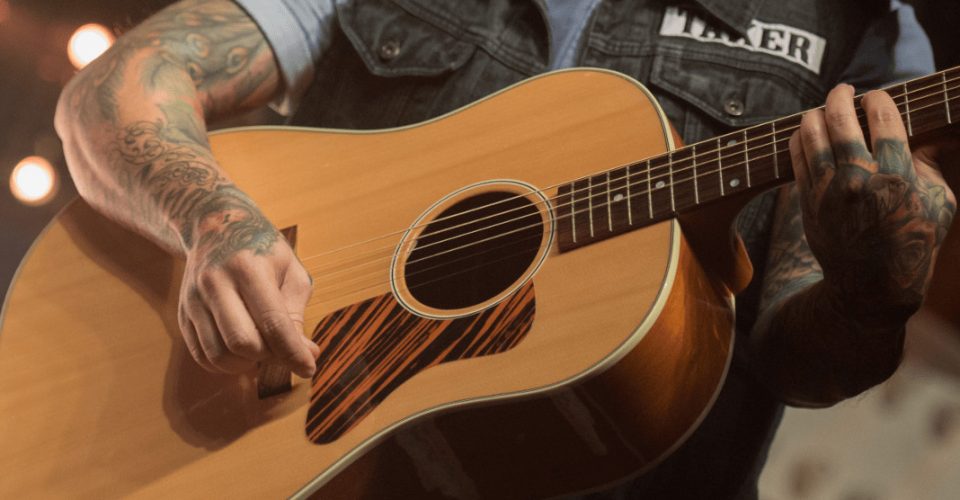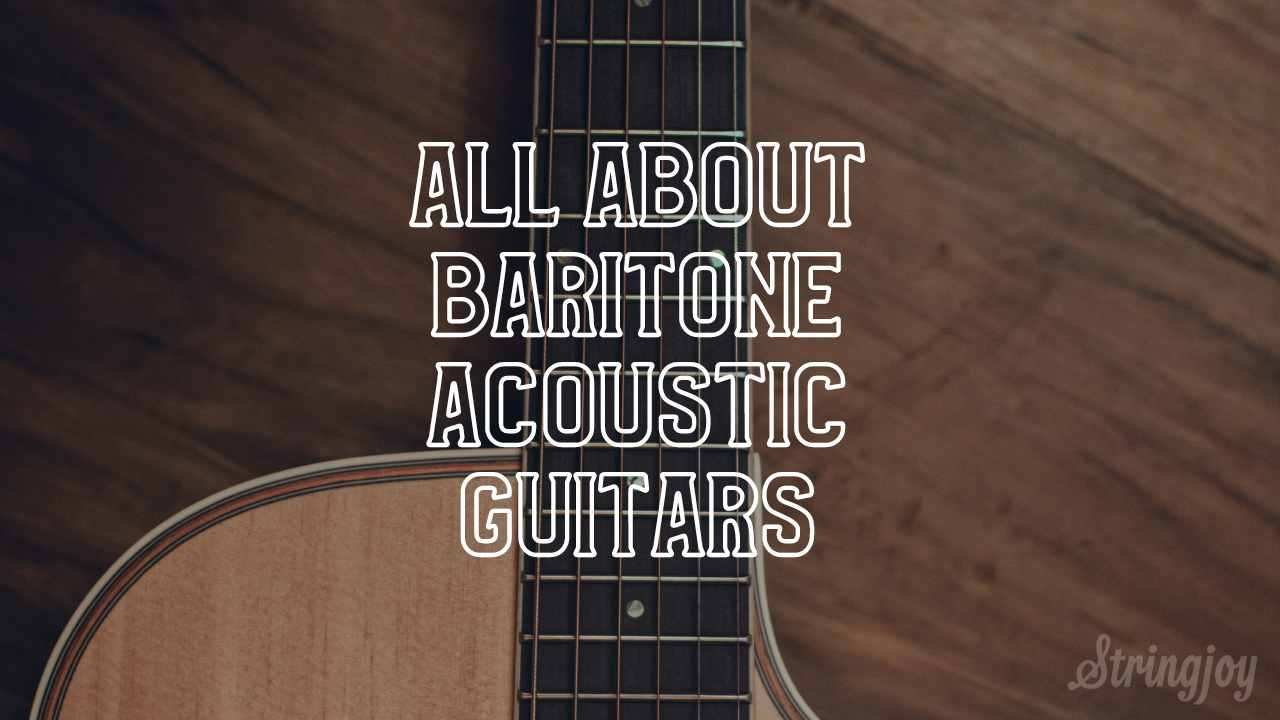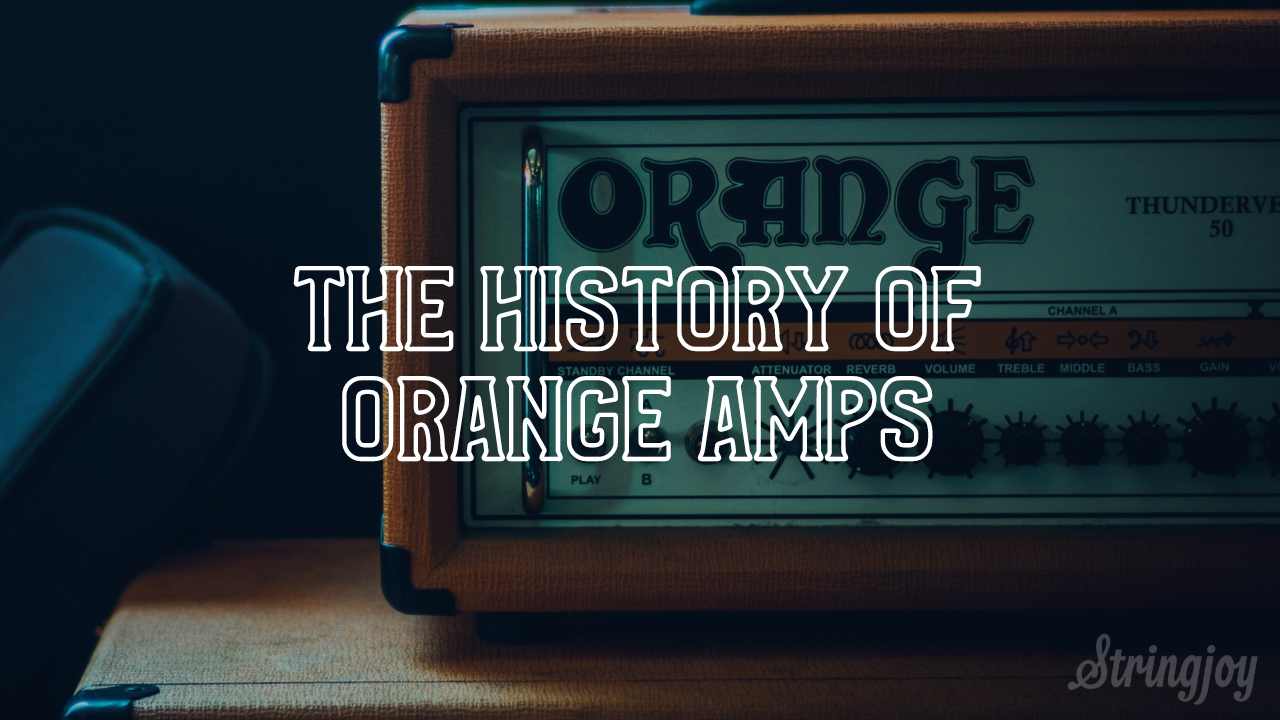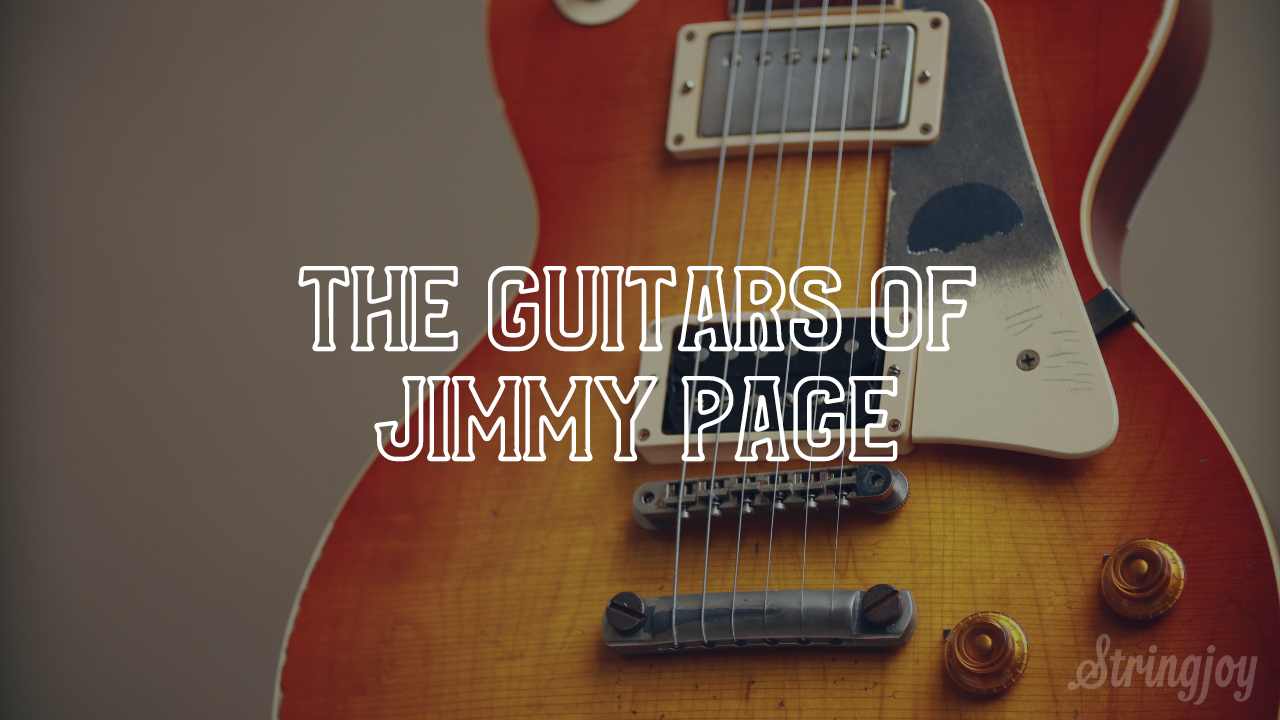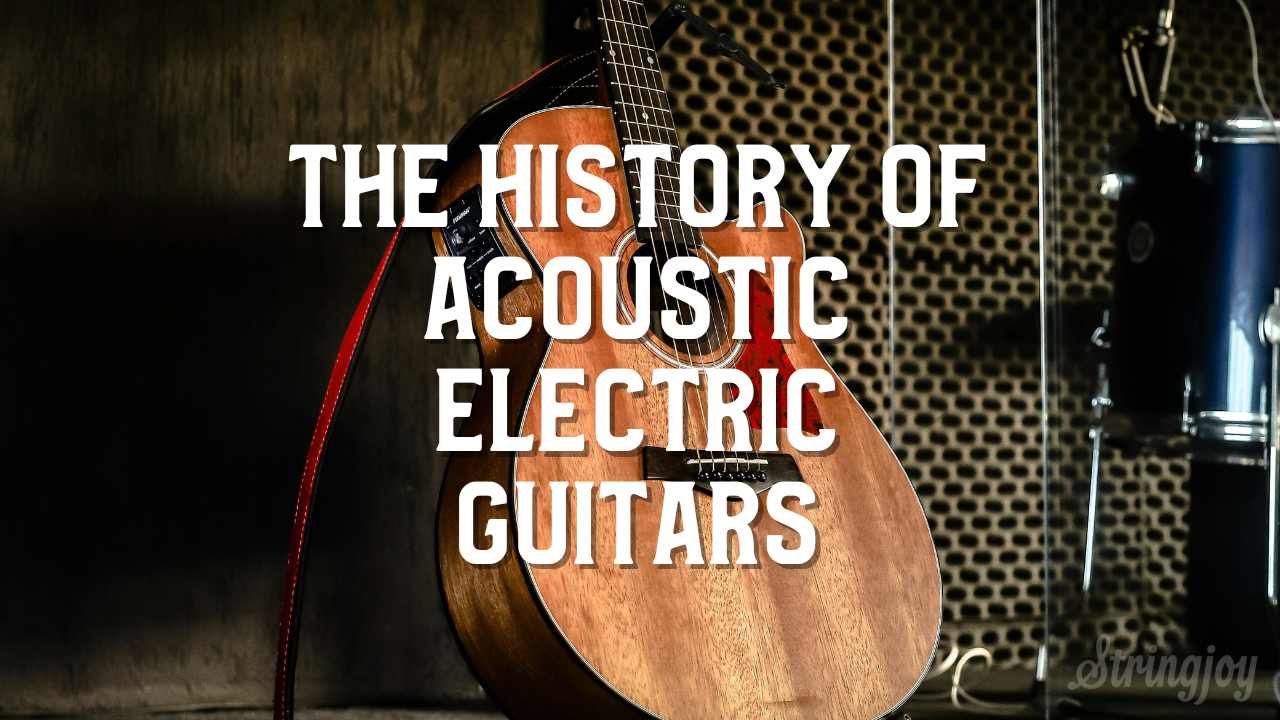Depending on how long you’ve been in the business of making music, you may or may not know that there is quite a wide variation in acoustic guitar body types. Most people are at least somewhat familiar with the two most common- that is, the dreadnought and the classical. If these are all you know, it may be surprising to find out that flattop body shapes range from as small as a ukulele to about as large as an acoustic bass.
When you’re searching for the perfect acoustic to give you the sound you’re chasing, being familiar with the different body styles can really help you hone in on your ideal tone. Whether you’re seeking just the right guitar to suit your songs or are simply curious about why these body differences came to be and how they’re used, I’m here to lay down some facts. We’ll take a look at the history, construction, and musical applications of the multivarious acoustic guitar body types in this article so you can walk away knowing if you’d be better off with a parlor, a 000, or a slope-shouldered dreadnought.
A Whole Bunch of Body Types

Classical Guitar Shapes
History
The classical body shape that we know today came into being during the middle of the 19th century thanks to the innovative work of Antonio de Torres Jurado. Torres, a Spanish luthier and guitarist, made it his mission to improve upon the Baroque-era instruments popular at the time. Though many others had contributed to the development of the instrument over the decades, Torres’ developments, including enlarging the body and utilizing thinner soundboards, so enhanced the sound of these six-stringed instruments that his standards remain the guideline for many classical guitars today. It is on Torres’ 19th-century designs that nearly all modern acoustic variants are based.
Tone and Playing Feel
The instruments directly preceding classical guitars gained recognition due to the increasing popularity of new styles of music which favored fundamental tones rather than the overtone-focused music of the baroque and romance periods. As such, guitars shifted their sonic prominence to these natural frequencies, becoming thicker and fuller in their voices. Today’s classical guitars, strung with nylon strings and typically made with spruce or cedar tops, carry on in this tonal tradition, though they are markedly softer and rounder than their steel-string counterparts.
It probably goes without saying, but nylon strings are a lot easier to break than steel strings. Consequently, classical guitars are best suited for fingerstyle technique, meaning you shouldn’t take any heavy-handed strumming with a plastic pick to them. Not only will this make you prone to snapping strings; it can also damage the top’s finish, as classical guitars lack pickguards. Plucking notes with your fingertips gives you the most out of the classical guitar’s tone, allowing you to hear the subtleties of each string and express your individual style throughout the performance.
Classical guitar technique extends to the player’s sitting position as well. Rather than holding the guitar across the thigh as is usual with steel-string acoustics, classical guitars sit in the player’s lap, with the neck held at an upward angle to better facilitate the fingering techniques of both hands.
Uses
While steel-string acoustics and electrics dominate the field of popular guitar music today, classical guitar music is still widely performed and admired. Aside from its most obvious application- that is, classical music- this guitar style has been and is employed in jazz, country, rock, and various world music genres throughout its history. Despite its limitations, it has proven to be a versatile instrument with a wide-reaching fanbase since its inception.
Variations
The most common classical guitar body size is simply referred to as a 4/4, with sizes scaling incrementally down to 1/4. There are also much larger classical models called contrabass guitars, which share many of the same qualities as a typical classical guitar though are tuned an octave lower.
Yet another variation of the classical guitar is the flamenco guitar. Similar in many ways, flamenco guitars are constructed with thinner soundboards and the addition of a tap plate. This tap plate, being somewhat like a pickguard, serves to protect the top of the guitar from the percussive taps inherent to flamenco music. With a thinner, lighter design and reduced internal bracing, flamenco guitars generally sound brighter with less sustain than their classical cousins.
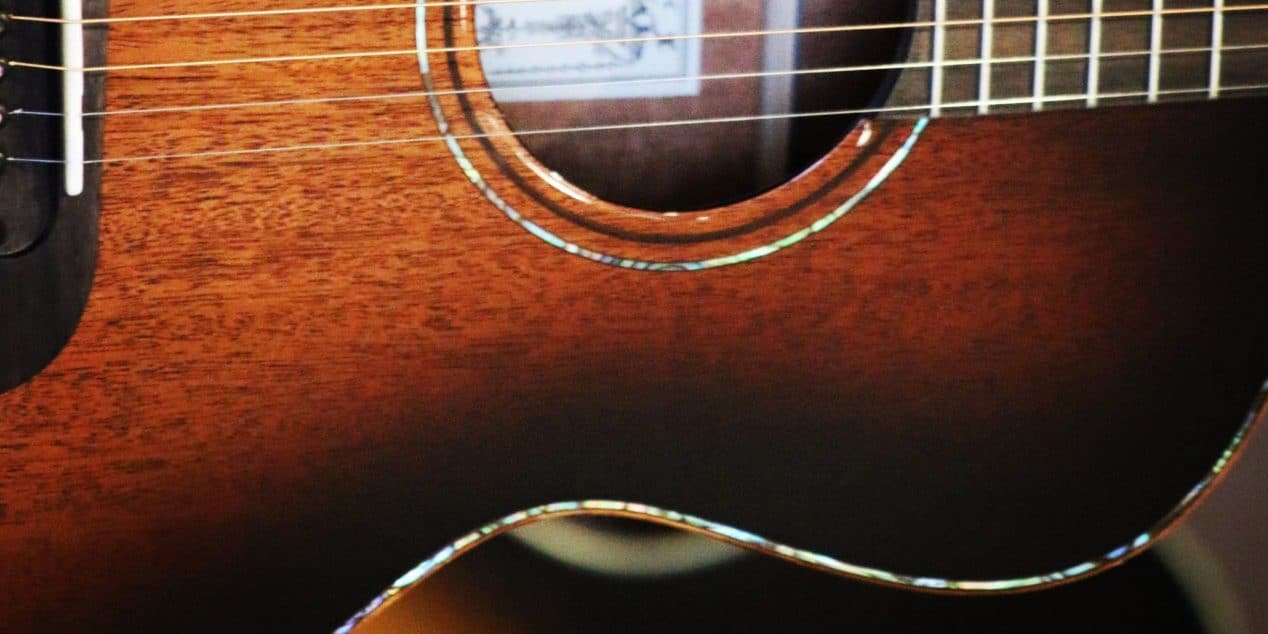
Parlor Acoustic Guitar Body Types
History
We owe the rise of modern guitars to a dispute between European cabinetmakers and violin luthiers in the early 1800s. It was during this time that Johann Georg Martin, a Saxon cabinet maker, and his cabinet-making compatriots began crafting guitars. Soon after, the Guild of violin makers in the area became vocally opposed to this mixing of labor, creating in these crossover craftsmen a desire for unmitigated creative freedom. It was this that led Johann’s son, Christian Frederick Martin, to immigrate to the United States and found the now world-renowned instrument brand C.F. Martin & Company.
C.F. Martin arrived in the U.S. just two decades before Torres would revolutionize guitar standards, and as such worked with the smaller, quieter ladder-braced guitars of the time. Seeking to create a more resonant instrument with greater projection, Martin and his fellow immigrant luthiers began developing the X-bracing system that is widely used in steel-string guitars today. Implementing this bracing system in the small-bodied guitars of the time, Martin engineered the predecessor of the modern parlor guitar. This enhanced bracing system added strength to the instrument, enabling the use of the newly-developed steel-wrapped silk strings and the introduction of larger, tension-resistant models such as the concert model.
Tone and Playing Feel
Parlor guitars are one of the smallest acoustic guitar body types widely in use today. With sloped-shoulders and narrow lower bouts, they are prized for their comfortable playability and are a popular choice amongst guitarists with smaller frames. Their small size also makes them ideal travel instruments.
Tonally, parlor guitars have a lot less projection power than larger guitars with greater soundbox volume. Nonetheless, they are responsive and plucky, lending themselves to the fingerstyle techniques of folk and country music. They offer a balanced tone that works just as well solo as it does in accompaniment.
Uses
While a parlor guitar won’t exactly serve your unplugged busking on a high-traffic street corner, they can hold their own and beautifully fill a special sonic slot in a full band. They’re a guitar type well-suited for traditional music that calls for a present trebly string, used for jaunty dance forms like the polka and the waltz while performing just as well with classical guitar arrangements. From rangy country ballads to campfire singalongs, parlor guitars are an excellent choice if you’re looking for a personal, peppy steel-string with deeply historical roots.
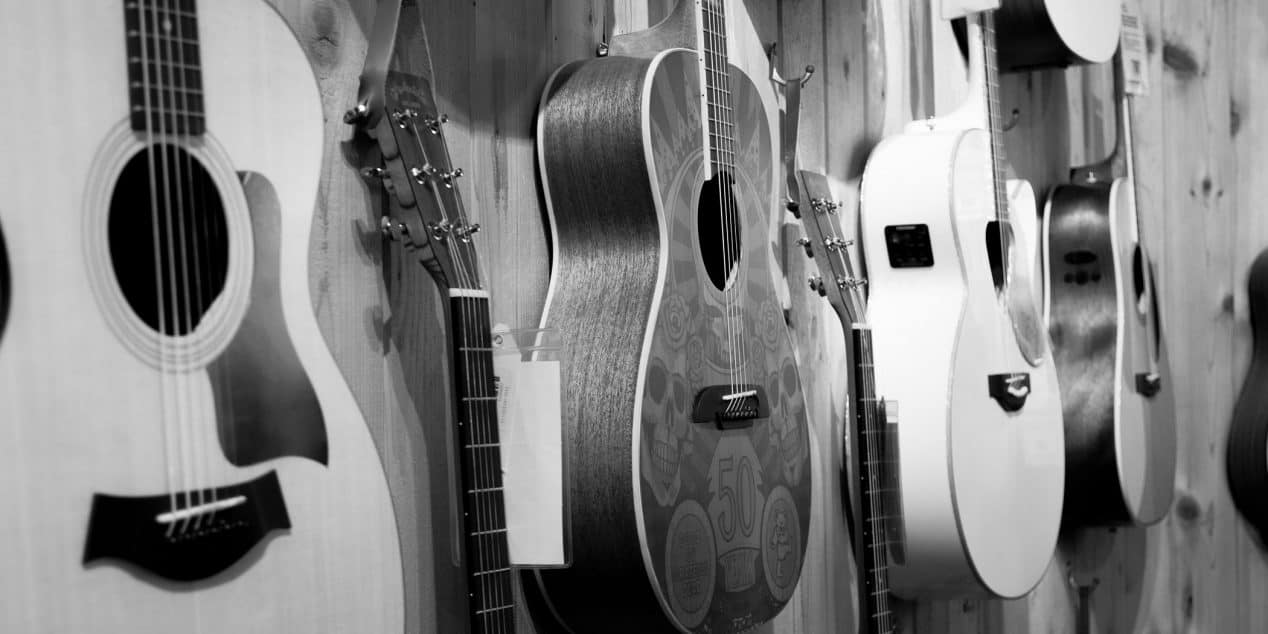
Concert (0)
History
As a result of the 19th century’s novel X-bracing, guitars were able to be designed with larger soundboards that could hold up to the strain of steel strings. Hence, American instrument makers began experimenting with many different acoustic guitar body types. Coming into creation around 1854 and remaining the go-to guitar size for decades afterward, the concert style is an acoustic body type that has stood the test of time.
Tone and Playing Feel
Concert guitars are, on average, just a bit bigger than their parlor precursors. As such, their tone is quite the same, with a smidge more midrange punch while maintaining the shining high-end that draws players to these smaller models. Their wider lower bouts kick up the bass response, but it’s still nothing compared to the booming voices of larger acoustic body types.
Still, concert guitars are delightful to play. A scale length typically ½ to ¾ of an inch shorter than dreadnoughts reduces their string tension, which gives you a softer playing feel and a delicate response in all ranges.
Uses
Like the parlor type acoustic, concert style bodies are great for the more folksy genres like bluegrass, country, and traditional blues. Just the same, they’re a wonderful steel-string option if you want to explore fingerstyle classical techniques while keeping your options open for heavier pick attacks. On that note, you shouldn’t be afraid to rock out on a concert style guitar, considering that Tim Armstrong of the punk band Rancid prefers to keep one in his arsenal. Overall, if you’re looking for a sharp-tongued, buoyant acoustic, concert models could be the way to go.

Grand Concert (00) Acoustic Guitar Body Types
History
Since its beginnings, the C.F. Martin & Co. has been passed down the family line. In 1867, the company’s founder formed a partnership with his son, Christian Frederick Martin Jr., who commanded the company after his father’s death in 1873. Four years later, Martin, in collaboration with his cousin C.F. Hartmann, introduced what was then the largest acoustic at the time, the grand concert model.
As grand concert guitars made their way onto the scene right around the same time Antonio de Torres was changing the musical world with his upgraded classical guitar shape, chances are the similarities between the body styles are less than mere coincidence. Grand concert acoustic guitar bodies are practically identical in dimensions to their classical counterparts. This boost in body size was made possible by further improvements to the X-bracing system popularized by Martin, giving steel-string guitars their next evolution in volume and projection.
Tone and Playing Feel
The concert and grand concert body types are comparable in most measurements, but the grand concert is actually a little less deep than its forerunner. This shallowing of the sound chamber, along with a slimming of the waist, adds a focus to the guitar’s tone, pumping up the midrange frequencies just a tad. Contrasting with this decrease in depth, the grand concert boasts an extra inch of width in the bottom bout, bringing its volume to a greater level than the smaller steel-string variants.
With similar scale lengths, the string tension of the grand concert is much the same as the concert before it, and the overall playing feel is pretty much alike. One distinguishing characteristic is that the slimmer waist fits more tightly on your thigh, which in turn causes a slight difference to playing posture. To some, this may not be a big deal, but if you have the issue of your acoustic frequently sliding off your leg, a grand concert style body might be the solution you’re looking for.
Uses
I can’t say there’s much difference in application between the concert and its grand sibling. They’re both great smaller guitars for fingerpicking genres and any style that could use some treble twang. With the grand concert, there’s somewhat more bass response, so you might feel more at home in the hearty rhythm work of blues and country with this body type than with the concert or parlor acoustic guitar body types.
Variations
There seems to be a lot of confusion in the guitar world about the 000 (Triple-0) shape. It’s often grouped along with the auditorium or grand auditorium styles, but there are differences worth noting. In its overall shape, the 000 is like a larger grand concert, featuring rounded shoulders and a narrow waist. But, it’s got a good inch or more in both bout widths as well as total length. Depending on the model, the 000 can also be deeper than the grand concert. Overall, this makes it a decently louder, more bass-heavy acoustic than the smaller grand concert type.

Archtop Acoustic Guitar Shapes
History
The 19th century saw the rise of another famed entry into the world of acoustic guitars with the birth of Orville Gibson in 1856. Gibson, progenitor of the distinguished brand of instruments carrying the same name, began crafting hand-carved guitars and mandolins from his home workshop in 1894. His designs were based on the curve-topped Italian violins of the time, taking a truly unique approach to luthiery. Thus was the archtop guitar introduced to the world.
Though Gibson Mandolin-Guitar Mfg. Co. Ltd. marketed their guitars with passion and fervor, it wasn’t until the decades later that they really hit the mainstream. With the introduction of the electric ES-150, Gibson archtops took a place of prominence in the musical realm, launching the guitar brand into the renown it has known ever since.
Tone and Playing Feel
While at the time of their inception archtops were some of the loudest and sonically-pleasing acoustic guitar body types of their time, it’s rare to find a fully acoustic archtop nowadays. As acoustics, the archtop design simply couldn’t compete with the dreadnought. This isn’t because they’re bad instruments; rather, popular music simply favors the robust tone of the flattop competitor.
If you do happen upon a non-electric archtop, you’re in for a treat. Their tone is wholly unlike that of dreadnoughts. It is biting and zesty, with a ringing clarity to each note that you can’t find in a flattop. Most archtops since the 1930s have featured dual f-holes as opposed to round soundholes, which imbues them with a somewhat boxy tone and a hint of natural reverb.
Though the earliest models weren’t much bigger than a classical guitar, nowadays they tend to be on the larger side. They can be a little hard to manage if you’re a small-bodied guitarist, but on the whole, archtop guitars are some pretty smooth-playing six strings.
Uses
With a tone perhaps best described as “vintage” or “antique,” archtop guitars are perfectly in place in jazz and blues genres. They impart a real classic tone to any style you use them in, but with a relatively low amount of sustain and tonal roundness, they’re not the best guitars for standalone rhythm work. In an ensemble, though, archtop style acoustics do a great job of cutting through the mix and sing their part in a harmonious way.
Auditorium (Orchestra Model) Acoustic Guitar Body Types
History
Steel string production started to ramp up at the turn of the century, and smaller instruments like mandolins and banjos latched onto them right away. The tone they produced gradually won people over, prompting guitar makers to figure out how to best utilize them. So it was in 1919 that Gibson introduced the first truss rod, reinforcing the neck of their guitars to better handle the high tension of these newly popular strings. Shortly after, in 1922, Martin devoted time and study to revising the X-bracing method to bring it up to the new steel string standard. During these first decades of the 20th century, Martin continued to release gradually larger acoustic guitar body types, but it wasn’t until 1929 that they revealed their OM-28. This orchestra model acoustic was the first fully modern steel-string guitar.
Tone and Playing Feel
While offering close to the same dimensions as the grand concert body shape, the auditorium adds a little over an inch in length and both bout widths. With this increase in size comes an increase in volume as well as a more pronounced low-range. The boost in the bass balances out what in smaller bodies is a sound predominantly issuing treble frequencies. With flat shoulders that drop steeply to a narrow waist, the auditorium is a guitar you can pull in close for an intimate playing experience.
Uses
The auditorium was the first body shape to really start to close the gap between the high and low frequency ranges, delivering a balance that allows for sultry leads as well as chunky rhythms. This makes the auditorium a versatile acoustic guitar body type that performs solidly in a wide array of genres and playing styles: from flatpicked bluegrass to gritty delta blues to delicate fingerstyle folk.
Variations
The grand auditorium is one of the newest additions to the scope of popular acoustic guitar body types. This design, presented by Taylor Guitars in 1994, combines the sleek profile of the auditorium with the big bulk of the dreadnought with the aim to be the “ultimate all-purpose acoustic.” Its lower bout can exceed the width of some dreadnoughts, though its upper bout and waist remain on the trim side. With the beefy lows of dreads, crispy highs of grand concerts, and a pleasantly focused midrange, the grand auditorium is a welcome newcomer to the gang of guitar body types.
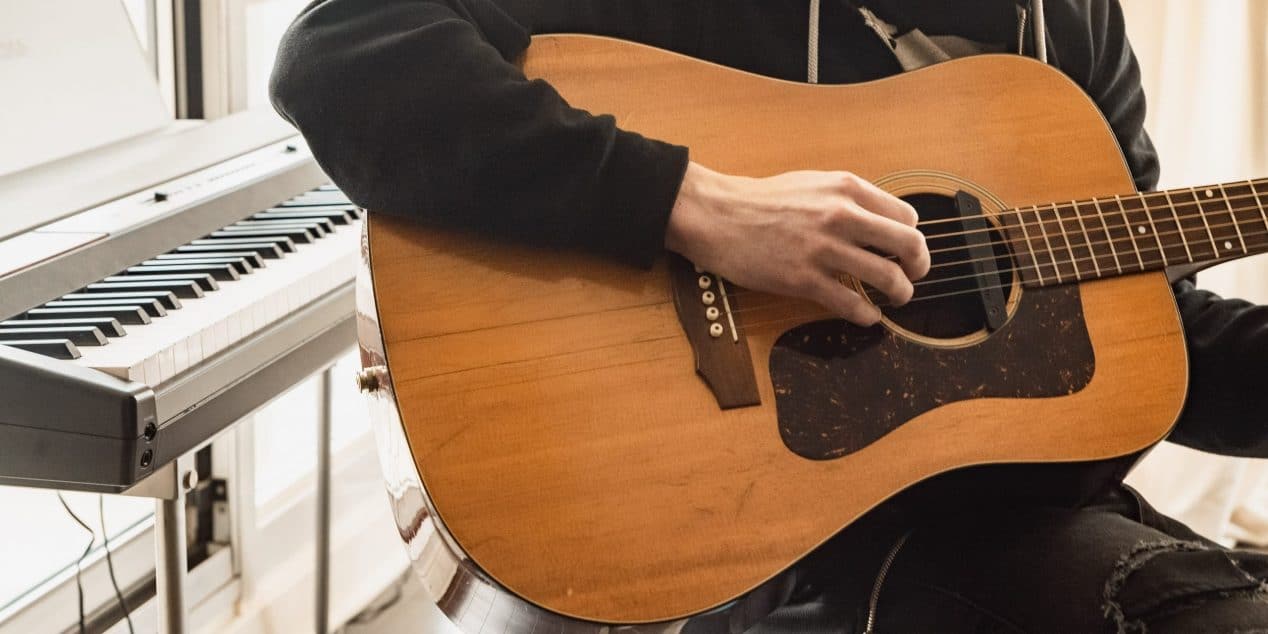
Dreadnought Acoustic Guitar Body Types
History
In thinking of the dreadnought, which followed only two years after the auditorium’s release, it’s easy to imagine the heads of C.F. Martin & Co. looking at the newly developed orchestra model and saying, “Yeah, it’s good and big- but, can we make it bigger?” Actually, the first dreadnought model was produced in 1916, but following a poor reception, it was withdrawn, recalibrated, and re-released in 1931 to great aplomb. The largest acoustic on the scene at that point, the dreadnought took its name from the biggest, baddest battleship of the time. It has since become the most popular and most recognizable acoustic guitar body type yet to be developed.
Tone and Playing Feel
With a voice as big as its body, the dreadnought helped take guitars to the mainstage. Now loud enough to compete with a band, country musicians quickly took to the tremendous new design and helped lift it to the point of fame at which it rests today. Dreadnoughts are the most bass-heavy acoustic body shape, though quality models strike a fine balance between the highs and lows. Enhanced X-bracing adds magnitudes of projection over the earlier acoustic bodies, giving the dreadnought a powerful tone that can fill a room with ease.
Its body depth peaking just below five inches, coupled with its bulky bouts and broad waist make the dreadnought a guitar you have to really get hold of to play right. It’s a shape that may be difficult for smaller guitarists, but it comes in scaled-down sizes that are well-suited for players of any size.
Uses
There’s not a genre that dreadnoughts haven’t touched. Though it leaves some nuance to be desired for classical and is generally a bit muddier than is good for jazz, the dreadnought is an acoustic guitar body shape that can pretty much do it all.
Variations
Round-shouldered vs. Square-shouldered vs. Slope-shouldered
First off, round-shouldered and slope-shouldered are two terms for the same shape. With that out of the way, there’s some debate over whether shoulder shape affects a guitar’s tone and, if so, by how much. The general consensus is that there’s probably some difference in sound, but without an objective way to measure it, we can’t really know what that difference might be. I would say that shoulder shape is one of the last things you should consider when shopping for an acoustic, unless, of course, you happen to have a really strong preference one way or the other. In the end, if a guitar meets all your other quality requirements aside from the set of its shoulders, it’s a fairly insignificant design choice better off overlooked.
Reduced Sizes
As I mentioned earlier, the general dreadnought shape comes in a few smaller sizes. Though you lose volume and bass projection, these 7/8, 3/4, 1/2, and 1/4 size models can make it a lot easier for kids or small-framed players to hone their flattop technique.

Jumbo Acoustic Guitar Body Shapes
History
Gibson, not to be topped by Martin in the guitar game, answered the 1931 dreadnought with a big guitar of their own, appropriately called the “jumbo.” Released soon after the dreadnought’s appearance, the jumbo acoustic body type has remained a favorite of many acoustic rhythm players for almost a century.
Tone and Playing Feel
Despite its name, the average jumbo guitar isn’t much bigger than a dreadnought. The bottom bout is around an inch wider, but otherwise, the two shapes share similar dimensions. A key difference between the body types is the width of the waist. Whereas a dreadnought is pretty wide all the way through, the jumbo design tapers to a relatively narrow waistline after its rounded shoulders. This gives it a well-defined tone that carries slightly more high-end ring than the dreadnought. Due to its bigger body size, the jumbo style requires a bit more of an aggressive attack to get a full response from, adding to its appeal as a meaty rhythm guitar to stand behind brighter lead instruments.
Uses
Although it’s not quite as tonally balanced as the dreadnought shape, the jumbo is still a reputable acoustic guitar body type that can serve you well in practically any genre. You’ll have to play it harder than other guitars to really make it sing, but you’ll be rewarded by a voice that can find its place in many different styles of music.
Variations
Sequentially after the initial release of Gibson’s first jumbo model came advanced jumbo and the super jumbo. The super jumbo is indeed a good deal larger than a dreadnought and carries a considerably deeper and fuller low-end, but is in turn in need of that much more power to play than the progressively smaller models.
Wrap-up
That about does it for the common acoustic guitar body types. In your search for a great guitar, you might run across the occasional roundback and resonator, but the ones I’ve detailed here will be the bulk of what you find.
There’s much more to finding your ideal guitar tone than body shape, like tonewoods, bracing style, and, of course, high-quality strings, but knowing which acoustic body type you prefer is a good place to start. They’ve each got a fascinating history, and their unique sonic qualities can totally change your sound, so the more you know, the better off your tunes will be. Happy picking! Or strumming! Or fingerpicking—you know what I mean…

